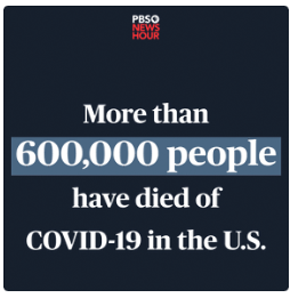Health Plan Weekly
-
Employer Plans in 2021: Premiums, Telemedicine Coverage Rise
The average annual premium for employer-sponsored health insurance increased 4% to $7,739 for single coverage and $22,221 for family coverage, respectively, this year, according to the Kaiser Family Foundation 2021 Employer Health Benefits Survey. In recent years, high-deductible plans with a savings option have been gaining popularity. About 22% of firms offered an HDHP/SO and 28% of covered workers were enrolled in such a plan in 2021, representing slight declines compared with previous years. Meanwhile, the COVID-19 pandemic has increased the use of telemedicine, as 95% of firms with 50 or more workers offered telemedicine coverage in their largest health plan, up from 85% last year. In addition, about 65% of firms with 50 or more workers made changes to enhance their telemedicine benefits after the beginning of the pandemic.
-
News Briefs: CVS to Close 300 Stores | Nov. 19, 2021
CVS Health Corp. on Nov. 18 unveiled executive moves, as well as new store formats designed to “drive higher engagement with customers.” The firm, which owns health insurer Aetna, will also close approximately 300 stores per year for the next three years. On the executive front, Prem Shah will fill the newly created role of chief pharmacy officer, and he and Michelle Peluso will become co-presidents of CVS Health’s retail business. Neela Montgomery, current executive vice president and president of CVS Retail/Pharmacy, will leave the company at the close of 2021. Meanwhile, CVS’s new store formats will include sites dedicated to offering primary care services and an enhanced version of HealthHUB locations, alongside traditional CVS Pharmacy locations, the company said.
-
For Managed Care, Democrats’ Spending Bill Is Mixed Bag
Among a slew of health care-related provisions in the most recent draft of the Build Back Better Act, the one with the biggest implications for health insurers is likely the proposal that would temporarily close the Medicaid “coverage gap.” But for the health care industry at large, the proposal that packs the biggest punch in H.R. 5376 is the narrowed-down — but still significant — set of drug pricing reforms recently added to the bill.
Included in those drug-pricing provisions is the long-sought authority that would allow HHS to negotiate the price of a select set of prescription drugs. Drugs with the highest gross spending in Medicare Part B and Part D would be targeted for negotiation, but only those that are single-source therapies and have been on the market for nine years or more (for small-molecule drugs) and 12-plus years (for biologics). All insulin products would be targeted for negotiation, and therapies produced by small biotech companies would be exempted.

-
Insurers Are Anxious to Resolve Uncertain Telehealth Policies
The COVID-19 pandemic has made virtual health care a permanent fixture of care delivery — at least as far as patients, practitioners and health plans are concerned. But the regulatory future of telehealth is still an open question: New state and federal policies on virtual care were implemented on a temporary, emergency basis and will expire in coming months unless state legislatures and Congress act.
Forty-four bills have been introduced by members of Congress from both parties and both chambers to address telehealth issues, according to JD Supra. Many emergency policies were enacted by HHS to increase telehealth access during the pandemic, but they will expire with the public health emergency, which is currently set to end 60 days after Jan. 15, 2022. At the state level, the picture becomes even more complicated. According to the Kaiser Family Foundation, 37 states and D.C. enacted some sort of policy that expanded telehealth services during the pandemic.

-
Wall Street Isn’t Sweating Cigna’s Third-Quarter MLR Miss
Cigna Corp. on Nov. 4 reported a higher-than-expected medical loss ratio (MLR) for the third quarter of 2021, which the company blamed on rising medical costs from COVID-19 care and from high utilization among customers who signed up for Affordable Care Act exchange plans during the pandemic special enrollment period. However, equities analysts were not overly concerned, noting that most investors saw the “MLR miss” coming and that Cigna did beat Wall Street consensus estimates for its quarterly earnings.
The insurer’s MLR for the quarter was 84.4%, which was higher/worse than the consensus estimate of 83.0% as well as up from the 82.6% MLR recorded in the third quarter of 2020. But its adjusted earnings per share (EPS) of $5.73 for the quarter beat the consensus estimate of $5.12, and its adjusted revenues of $44.3 billion also beat the Street’s expectations of $43 billion.












